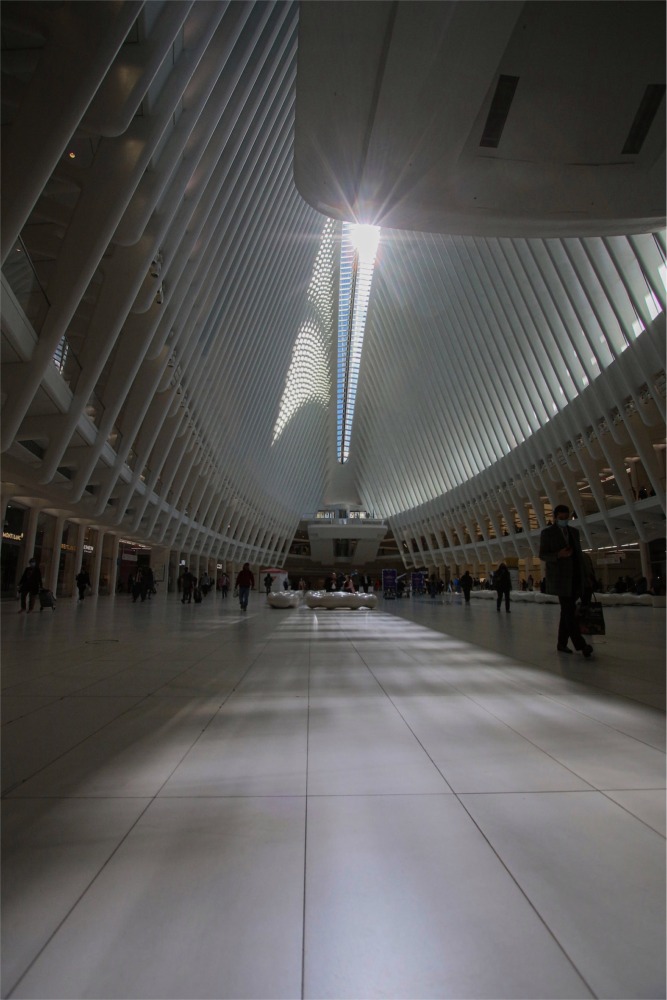Oculus One World
Trade Center Path Station
Home > New York State Photographs > New York > Oculus One World Trade Center Path Station

The muted light of the sun danced across the ribs of the Oculus Transportation Hub in Manhattan, filtering down to the cavernous atrium below. Commuters walked to and fro almost oblivious to Santiago Calatrava's masterpiece above their heads. Each one of them consumed with their own journey moving through the city and through life.
At eye level, however, the cavernous atrium of the Oculus provided an entirely different view. From the center of the room, a person could take in the entire grandeur in one sweeping glance. It was a breathtaking sight: a ceiling of white arches and glass that curved and intersected each other in a complicated pattern, letting in a dappled, ever-changing light.
In one corner of the atrium, a small group of people stood out from the bustle of the crowd. They were gathered around a man dressed in a dark suit, who seemed to be pointing out the beauty of the building to his friends.
Oculus World Trade Center Transportation Hub
The Oculus is a transportation hub and architectural marvel located at the site of the World Trade Center complex in Lower Manhattan, New York City. It is officially known as the World Trade Center Transportation Hub and serves as a major transportation hub for commuters, connecting various subway lines, the PATH train system, and providing access to the World Trade Center buildings.
Designed by renowned architect Santiago Calatrava, the Oculus is an impressive structure that resembles a bird taking flight or a large white ribcage. It features a striking white steel and glass design, with a soaring, open interior space. The centerpiece of the hub is the expansive main hall, which is flooded with natural light through a massive skylight known as the "oculus."
The Oculus serves as a multi-level hub, connecting to multiple transportation modes and providing access to various parts of the World Trade Center complex. It integrates with the PATH station, which offers direct train service to and from New Jersey. The hub also connects with 12 different subway lines, making it a crucial transportation link for commuters and visitors.
In addition to its transportation function, the Oculus also features a variety of retail spaces, including high-end boutiques, restaurants, and a large shopping mall called Westfield World Trade Center. The mall offers a range of shopping options, from luxury brands to popular retailers, and provides a unique shopping experience within the architectural splendor of the Oculus.
The Oculus has become an iconic landmark in Lower Manhattan, symbolizing resilience and hope in the wake of the September 11, 2001, terrorist attacks. It stands as a testament to the city's determination to rebuild and revitalize the World Trade Center site. The sleek and futuristic design of the Oculus, combined with its practical transportation facilities and vibrant retail spaces, make it a popular destination for both locals and tourists alike.
Overall, the Oculus at One World Trade Center is not only a functional transportation hub but also a stunning architectural masterpiece that embodies the spirit of New York City's resilience and serves as a symbol of hope and renewal.


